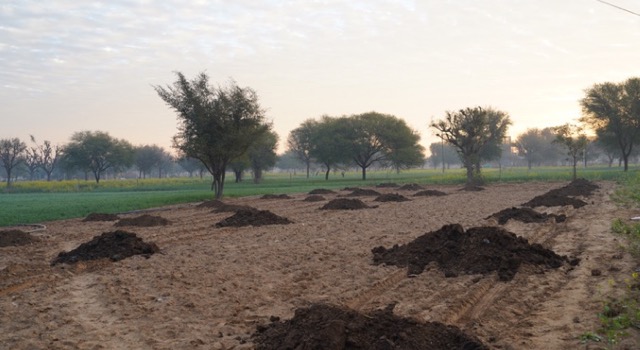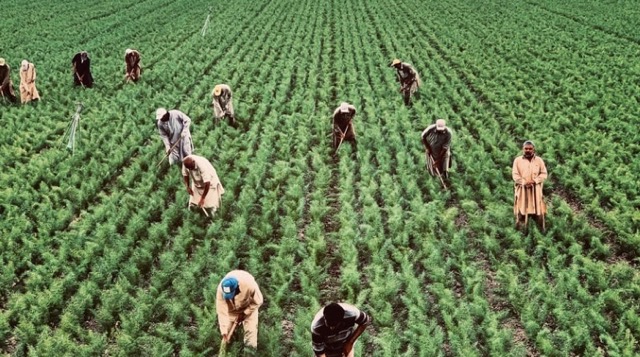
In a small Indian village called Sundargram, a couple named Radhika and Ravi lived. Radhika was a highly educated environmental scientist who had returned to her hometown after completing her studies. At the same time, Ravi was a skilled and traditional farmer deeply connected to his ancestral land.
They married 5 years ago and lived happily in the village. Radhika worked for a government institute, while Ravi spent most of his time farming. The couple was happy as they spent their day doing things they were passionate about.
One day, as Radhika observed the fields surrounding their village, she noticed a troubling trend - the air pollution levels were rising, affecting the health and well-being of the villagers. She spoke with a nearby doctor who told her that there was an increasing pattern of patients with respiratory issues.
As the village was small, there were no significant traffic issues, and no industries nearby, she knew what was causing increased air pollution. Most people in that village did farming on a large scale, and Radhika knew that agricultural activities, including the emission of ammonia, were significant contributors to this problem.
Determined to make a positive change, Radhika approached Ravi with her knowledge and suggestions. She knew it would not be easy, as traditional practices were deeply ingrained in their community. However, she believed that she could convince Ravi to adopt more sustainable farming methods with love, understanding, and the power of knowledge.
One evening, as the sun set over the fields, Radhika sat down with Ravi under the banyan tree, where they often gathered to talk about important matters.
"Ravi," Radhika began gently, "I have been studying the impact of agricultural activities on the environment, and I've discovered ways to reduce air pollution in our village."
Ravi listened attentively, respecting Radhika's expertise and passion for the subject. "Tell me more, Radhika. I'm eager to learn," he said.
"Well," Radhika continued, "one of the major contributors to air pollution in our region is ammonia emissions from synthetic fertilizers and improper livestock waste management. I believe we can address this issue by adopting some eco-friendly practices."
Ravi's interest was piqued. "Eco-friendly practices? Radhika, how can we do that without compromising the yield of our crops and our livelihood?"
Radhika smiled, glad to see Ravi's curiosity. "I understand your concern, Ravi. We can use organic fertilizers like compost, animal manure, food processing wastes, sewage sludge, and municipal biosolids. Instead of synthetic ones. Organic fertilizers release nutrients slowly and enrich the soil naturally, leading to healthier crops in the long run."
Ravi nodded thoughtfully. "That does sound promising. And what about the livestock waste?"
"We can implement better manure management," Radhika explained. "By collecting and treating the waste properly, we can reduce the release of harmful ammonia into the air and create nutrient-rich compost for the fields."
Radhik said these changes could improve air quality and the villagers' health.
Ravi realized that these changes could benefit not only the environment but also their own farm's productivity.
"Radhika, you are right," Ravi said with determination. "We must care for our land and village. Let us adopt these practices and set an example for others."
Together, Radhika and Ravi started making the necessary changes on their farm. They collaborated with fellow farmers and held meetings to learn more about sustainable agriculture. With her prior knowledge, Radhika educated everyone in their village to stop agricultural activities that aren’t good for the environment.
Soon, as they adopted eco-friendly practices of collecting and treating waste properly, they noticed positive changes in their crops and the surrounding environment.
Word spread throughout Sundargram about Radhika and Ravi's efforts. The village began to appreciate the significance of sustainable farming, and other farmers followed their lead. The community gathered, organizing workshops and discussions to promote eco-friendly practices and reduce air pollution.
As the years passed, Sundargram transformed into a thriving model of sustainable agriculture. Radhika's knowledge and Ravi's dedication helped preserve the beauty of their village and set an example for the entire region. With love, understanding, and the power of education, Radhika and Ravi's story became an inspiring tale of change and progress for future generations.
We hope that farmers in India understand that some traditional practices harm nature and we need to change them.








Leave A Comment
Your email address will not be published. Required fields are marked.